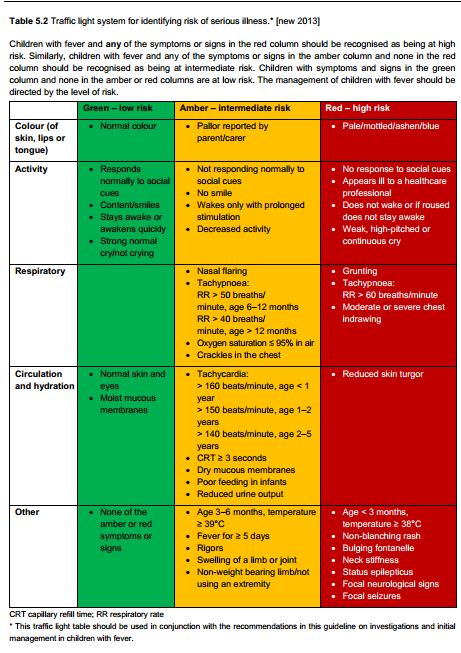The National Institute for Health and Care Excellence (NICE) has published, in 2013, the following excellent guideline: Feverish illness in children: assessment and initial management in children younger than 5 years (pdf). What follows are some excerpts from this document (be sure to check out the the traffic light system chart):
Clinical assessment of children with fever
Assess children with feverish illness for the presence or absence of symptoms and signs that can be used to predict the risk of serious illness using the traffic light system (see table 5.2). [2013]
Measure and record temperature, heart rate, respiratory rate and
capillary refill time as part of the routine assessment of a child with
fever. [2007]
Recognise that children with tachycardia are in at least an intermediate-risk group for serious illness. Use the Advanced Paediatric Life Support (APLS)* criteria below to define tachycardia: [new 2013]
Age Heart rate (bpm)
<12 months >160
12-24 months >150
2–5 years >140
Assessment of risk of serious illness
8 Assess children with feverish illness for the presence or absence
of symptoms and signs that can be used to predict the risk of
serious illness using the traffic light system (see table 5.2). [2013]
9 When assessing children with learning disabilities, take the
individual child’s learning disability into account when interpreting
the traffic light table. [new 2013]





